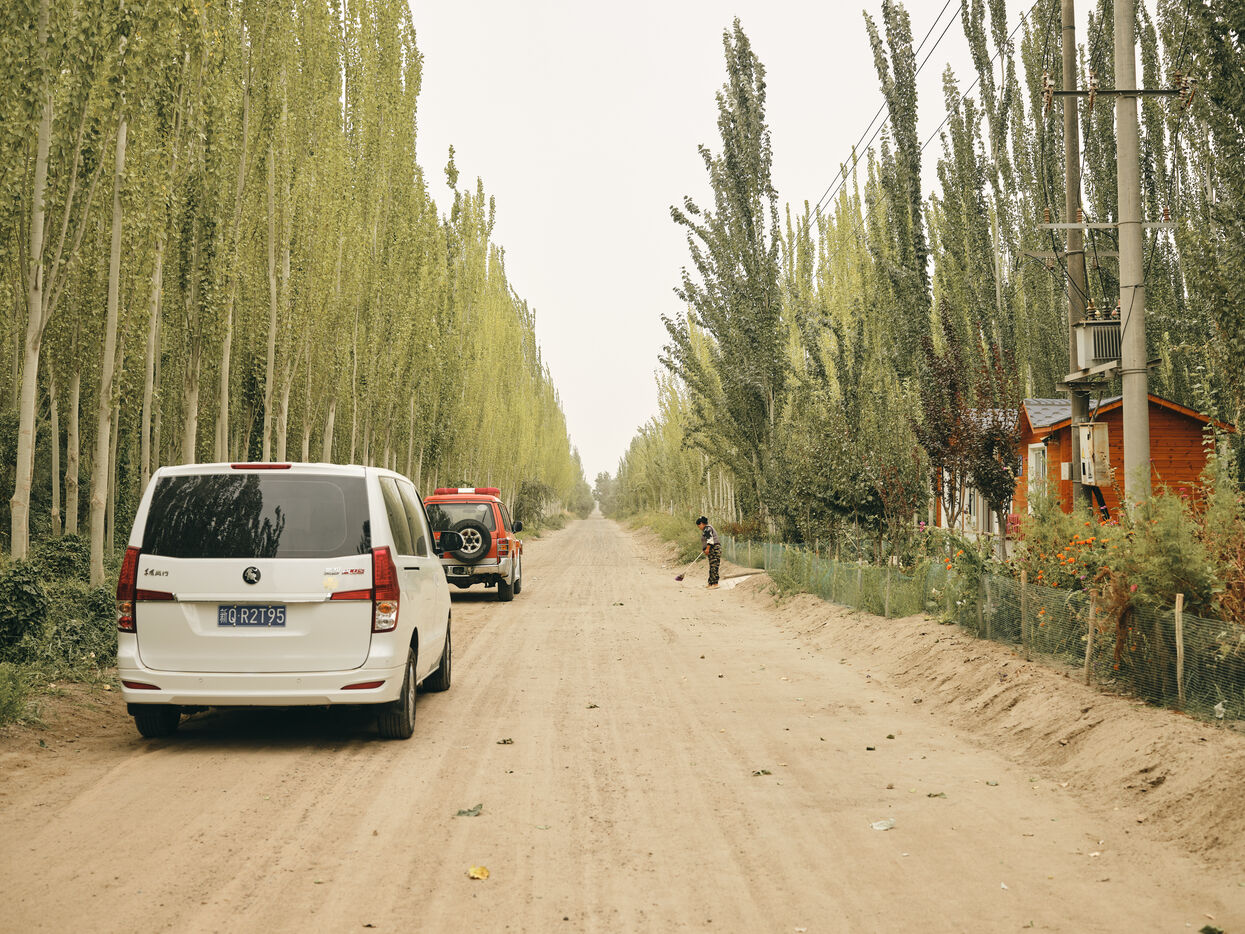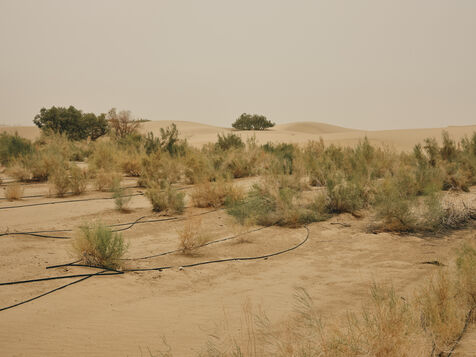Barrage vert contre le désert du Taklamakan
Il existe une forêt dans le désert qui s’étend malgré les assauts du sable. Elle a même un nom : « Le million de Mu* ». Elle est à l’extrême ouest de la Chine, dans le Xinjiang, et plus précisément dans le comté de Makit. Et elle n’a rien de naturel.
Tout a commencé en 2012, lorsque les experts ont constaté l’avancée inéluctable du Taklamakan. Ce désert, grand presque comme l’Allemagne et en plein coeur du Xinjiang, est le second plus grand désert de dunes mouvantes au monde. Et il menaçait d’ensevelir villages, vergers et champs de coton si rien n’était fait.
D’après les agro-forestiers dépêchés, en soit ce n’était pas très compliqué car l’eau n’est pas loin grâce à la rivière Yarkand qui dévale de la chaîne de montagne Kunlun. Les espèces d’arbres et de végétaux résistantes à la chaleur, au froid ainsi qu’à une certaine sécheresse sont également connus et maîtrisables. Ce qui pose véritablement un défi est la dimension de ce barrage vert et son entretien.
En effet, une première phase de 667 km2, finie maintenant, a été prévue. Pour cela, il a fallu mobiliser des milliers de personnes pour planter ces arbres, amener le système d’irrigation, planter des barrières contre le sable le temps que les végétaux prennent de l’ampleur. Ce sont surtout les locaux qui ont été sollicités et aujourd’hui pas une personne dans le comté ne se souvient de ce temps mémorable de travail collectif.
La surface de ce barrage vert prévoit d’être triplée dans les années à venir. Pour le moment il remplit parfaitement son rôle, le comté est en partie protégé et l’urgence n’est plus aussi vive. Aussi les nouvelles plantations se font plus doucement, au fur et à mesure et ne nécessitent plus de mobiliser autant de monde que dans les premiers temps. La tâche la plus ardue maintenant est de bien entretenir cette forêt pour qu’elle parvienne à s’étendre spontanément, notamment en ce qui concerne les petits arbustes qui ont un rôle fondamental pour maintenir l’humidité dans le sol.
le Mu est une unité de mesure chinoise qui correspond à 1/15ème d’hectare.
A green dam against the Taklamakan desert
There is a forest in the desert that grows despite the onslaught of sand. It even has a name: ‘The One Million Mu*’. It's in the far west of China, in Xinjiang, in Makit county to be precise. And there's nothing natural about it.
It all began in 2012, when experts noted the unstoppable advance of the Taklamakan. This desert, slightly the size of Germany and right in the heart of Xinjiang, is the second largest desert of shifting dunes in the world. And it threatened to engulf villages, orchards and cotton fields if nothing was done.
According to the agro-foresters who were dispatched, it wasn't really that complicated, because water is not far away, thanks to the Yarkand river which flows down from the Kunlun mountain chain. The species of trees and plants that are resistant to heat, cold and drought are also known and can be controlled. What really poses a challenge is the size of this green dam and its maintenance.
The first phase, covering 667 km2, has now been completed. Thousands of people had to be mobilised to plant the trees, install the irrigation system and plant barriers against the sand while the plants grew. It was mainly the locals who were called in, and today not a single person in the county forgot this memorable time of collective work.
The surface area of this green dam is set to triple in the coming years. For the moment, it is fulfilling its role perfectly, the county is partly protected and the urgency is no longer as high. The new plantations are being planted more slowly, as and when they are needed, and no longer require as many people as in the early days. The most arduous task now is to maintain the forest so that it can expand spontaneously, particularly in terms of the small shrubs that play a fundamental role in maintaining moisture in the soil.
* Mu is a Chinese unit of measurement corresponding to 1/15th of a hectare.



























